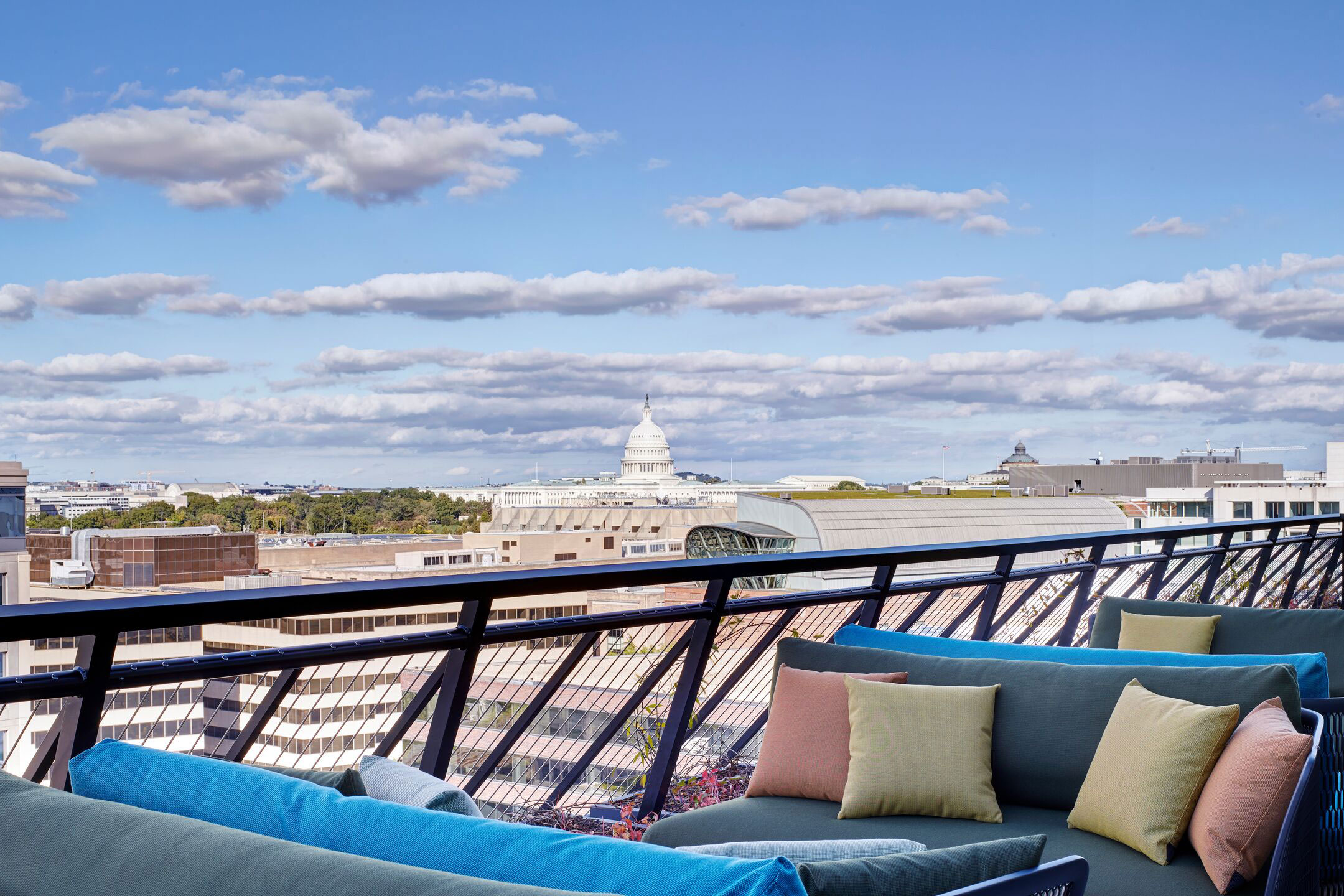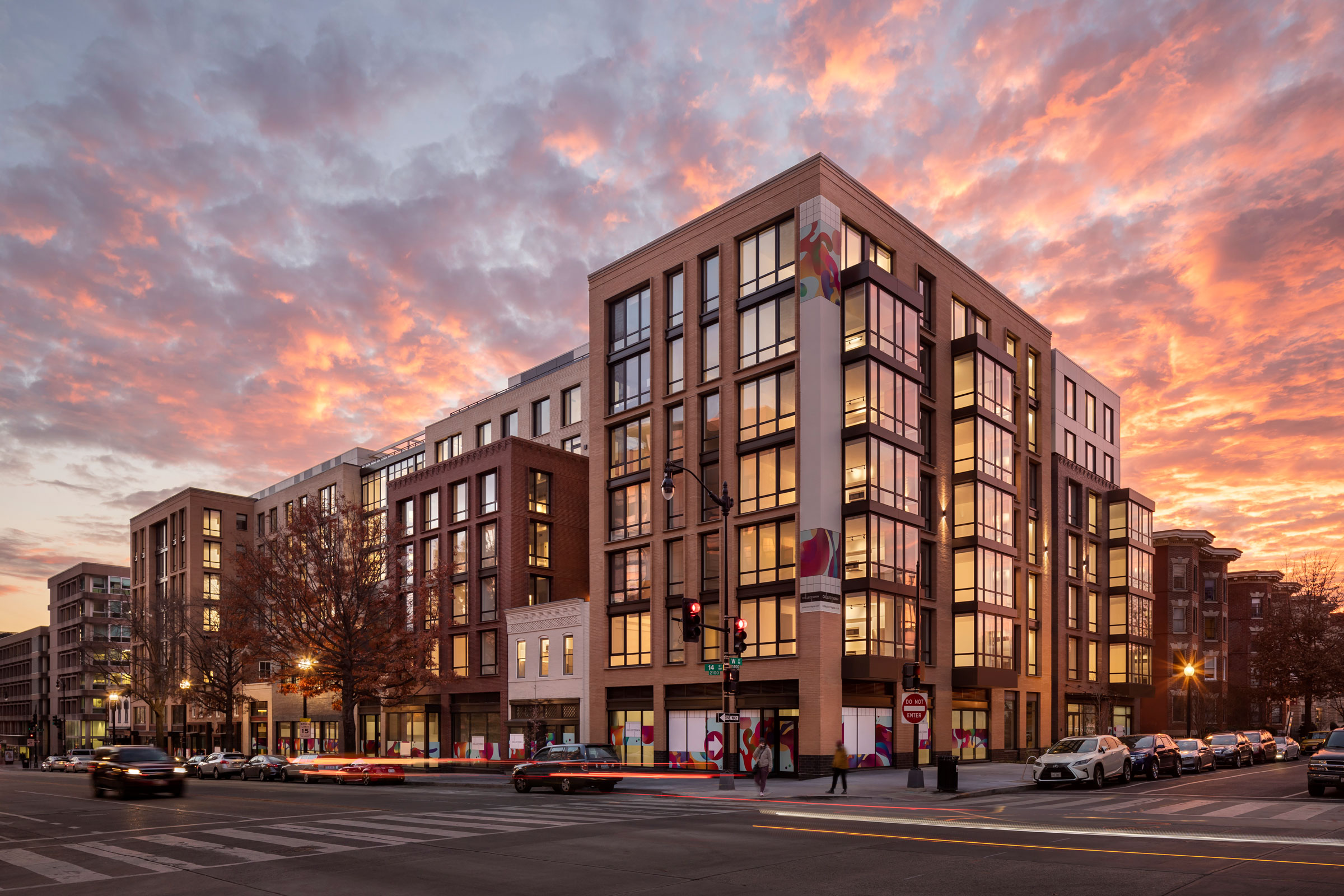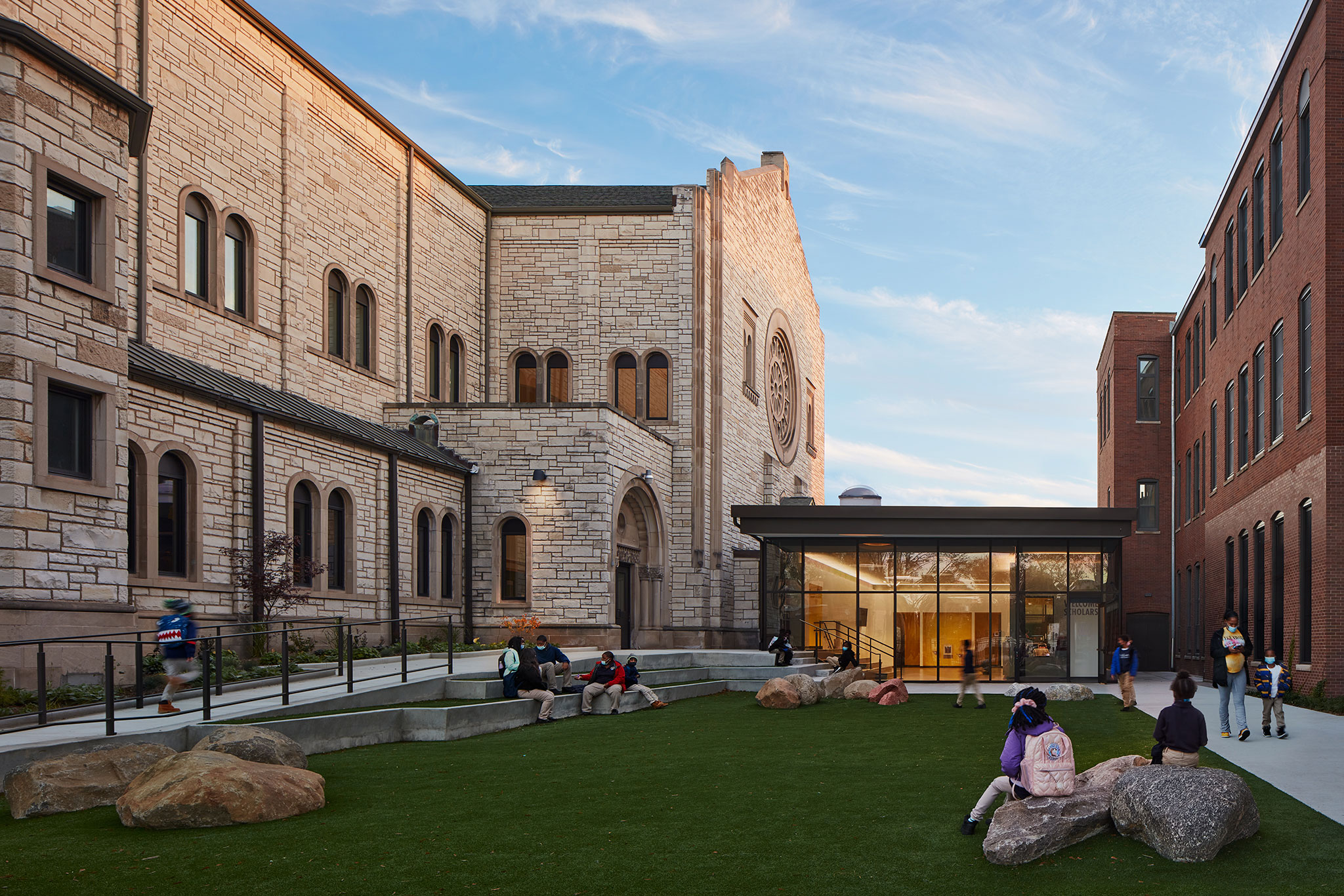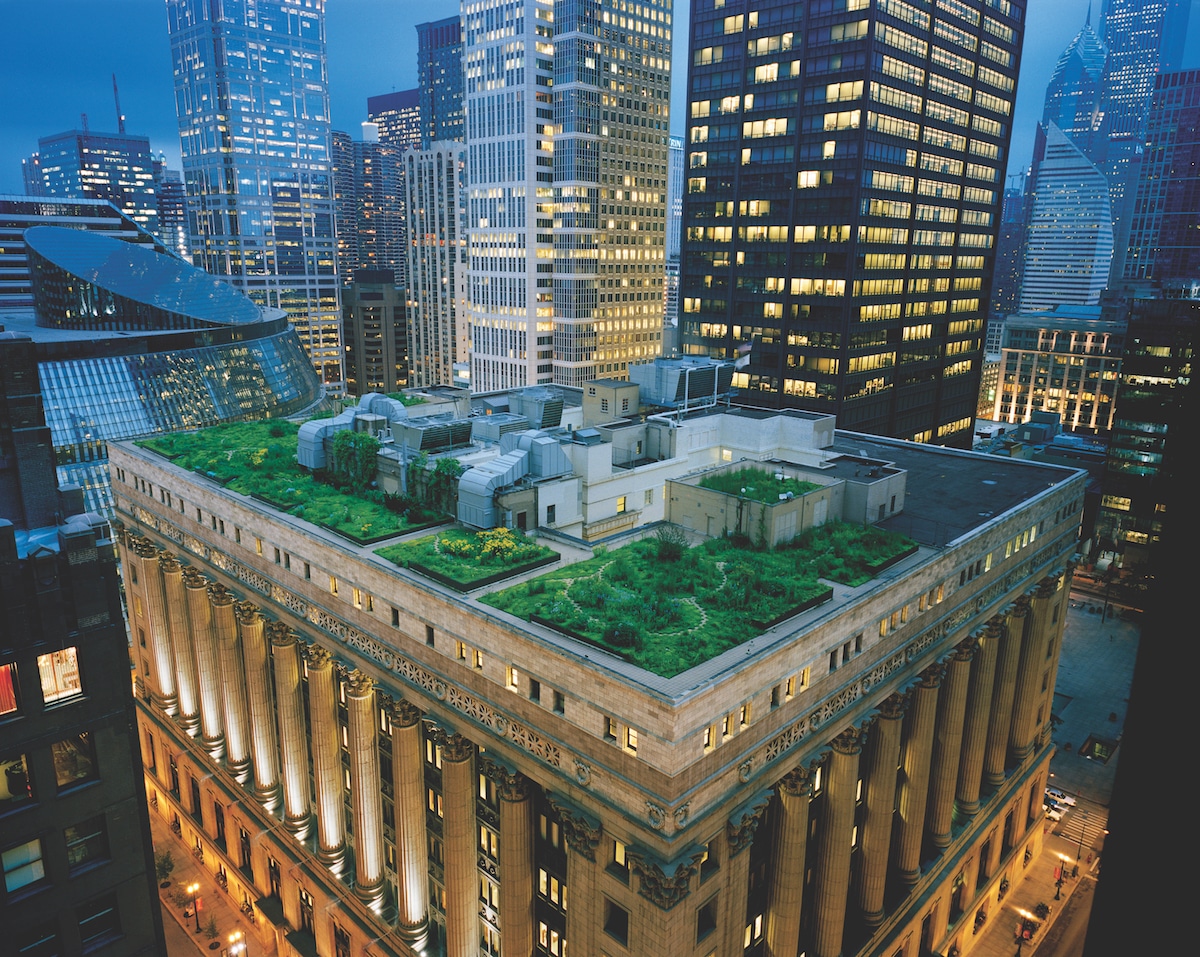Story at a glance:
- The LEED for Cities program awards LEED Platinum certification to cities that have gone above and beyond when it comes to sustainable development.
- LEED Platinum cities are judged based on five categories: energy, water, waste, transportation, and quality of life.
- There are currently 17 LEED Platinum cities in the world—including the District of Columbia, Chicago, Sapporo, Surat, and Dubai.
Developed in 2016 as an offshoot of the USGBC’s LEED Building Certification program, LEED for Cities is designed as a means for local governments to measure and communicate performance as well as provide a baseline assessment of certain factors, including: carbon reduction and neutrality, public health and affordable housing, conservation and natural resource protection, renewable energy, and land use planning.
LEED for Cities uses Arc—a state-of-the-art digital platform—to benchmark and track performance, help cities make more informed development decisions, and provide greater transparency into cities’ sustainability efforts. To qualify for certification, cities are required to achieve a minimum prerequisite score of 40, with additional points available via credits.
A city’s initial prerequisite performance score is judged based on 14 metrics across five categories: energy, water, waste, transportation, and quality of life. Both existing cities and planned cities are eligible for LEED certification, though the scoring system differs somewhat between the two categories.
What is a LEED Platinum City?

Chicago was one of the first LEED Platinum cities in the world and contains one of the highest concentrations of LEED-certified buildings, such as the LEED Gold 300 South Riverside Plaza designed by SOM. Photo courtesy of CBRE
Much like LEED for Buildings, the LEED for Cities program recognizes four distinct certification levels—Certified, Silver, Gold, and Platinum—of which are differentiated by a project’s total score:
- Certified (verified score of 40 – 49)
- Silver (verified score of 50 – 59)
- Gold (verified score of 60 – 79)
- Platinum (verified score of 80+)
For a city to qualify for LEED for Cities certification, they must first meet all prerequisite credits, after which they may begin earning points for meeting various credits—the more credits and more points earned, the higher the level of certification.
Any city that achieves LEED certification should be commended for their efforts at promoting sustainability. Just like the buildings that achieve LEED Platinum, cities that receive LEED Platinum certification are a cut above the rest, demonstrating unparalleled commitment toward equitable, sustainable development across all sectors.
5 Examples of LEED Platinum Cities
As of 2022 151 cities and communities around the world had achieved some form of LEED certification. Of those cities, only a handful received LEED Platinum certification. Here are five of the most impressive LEED Platinum cities.
Washington, DC

Washington, DC was the first city in the world to achieve LEED Platinum certification and continues to be a pillar of sustainable development. Photo courtesy of citizenM
In 2017 Washington, DC was awarded the world’s first LEED for Cities Platinum certification for achieving comprehensive sustainability and resiliency goals—particularly those relating to the reduction of greenhouse gas emissions, support of clean energy innovation, and promotion of inclusive prosperity and livability in each of the city’s eight wards.
In the years leading up to the city’s LEED Platinum certification, DC’s local government completed the largest wind power purchase deal of its kind, entered into one of the country’s largest on-site municipal solar projects, and pledged to uphold commitments laid out by the Paris Climate Accord. During this time the DC Administration also launched Sustainable DC 2.0—a plan to make DC the greenest, healthiest, and most livable city possible—and Climate Ready DC, a comprehensive plan for adapting to climate change and climate disasters.
Both plans highlighted the need for green infrastructure and a sustainable built environment, building off of the District’s Green Building Act of 2006, which required all non-residential public buildings to achieve at least LEED Silver certification. It was for this reason that, at the time of its LEED for Cities Platinum certification, DC already held over 850 LEED-certified building projects—like the LEED Gold certified Collection 14 Residential Complex—and boasted the highest square footage of LEED-certified space per capita of any US city.

The LEED Gold certified Collection 14, designed by Perkins Eastman, is framed by two apartment towers and incorporates several historic structures and facades. Photo by Andrew Rugge
In addition to its stellar built environment, Washington, DC was also commended for its green-space-to-gray-space ratio: approximately 24% of the land (or roughly 7,617 acres) in DC is reserved for parks, ranking it amongst the best in the country for per capita green space distribution.
Where the District really shines, however, is in the energy category, especially when it comes to carbon reduction; the DC Government receives 100% of its power from renewable energy sources and 58% of all commuter trips made within the city are by bike, public transit, or walking, drastically reducing the city’s greenhouse gas emissions and improving overall air quality.
Surat, India
In 2018 Green Business Certification Inc. awarded LEED Platinum certification to the city of Surat, making it the first Indian city to receive such an honor. Overall Surat received a score of 87 out of 100—one of the highest scores to date.
I =n the Indian state of Gujarat, Surat is one of the country’s largest and fastest growing cities, home to a population of over 5 million. After winning the LEED Performance Challenge in 2016, Surat’s local government and the Surat Municipal Corporation set their sights on LEED for Cities certification.
To reduce the city’s carbon emissions and promote renewable energy, the Surat Municipal Corporation invested heavily in solar PV installation, offshore wind energy, and commissioned the construction of several biogas plants. Overall these measures helped Surat reduce its per capita carbon emissions to roughly 4.46 tons—among the lowest in the entire country. The development and implementation of a Bus Rapid Transit System further served to reduce greenhouse gas emissions and improve public transportation for the city’s residents, helping Surat earn full marks in Arc for both energy and transportation.
Surat also scored full marks in the water category, especially with regard to wastewater reuse; a system of 10 sewage treatment plants and 60 sewage pumping stations allows the city to convert 40,000,000 liters of wastewater into industrial-grade water per day. The city also practices leakage mapping and conducts water audits to ensure peak water efficiency.
At the time of its certification Surat had just begun city-wide waste reduction efforts, successfully diverting approximately 3% of solid waste from landfills per year. Shortly after receiving LEED Platinum city officials set a goal to reduce waste production by 80% through various means—like vermicomposting, composting, and biomethanation.
Dubai

Dubai is the only city in the Middle East and North Africa region to achieve LEED for Cities Platinum certification. The city’s success is largely due the efforts of the Dubai Electric and Water Authority and the adoption of the Dubai Clean Energy Strategy. Photo courtesy of the Global Cement and Concrete Association
In 2019 Dubai became the first city in the Middle East and North Africa region to receive LEED Platinum—a feat that has since helped the city solidify itself as a global hub for sustainable development.
Dubai’s certification is largely thanks to the Dubai Clean Energy Strategy, a program launched in 2015 by the city government which set out to make Dubai one of the most sustainable cities in the world by the year 2050. Overall the program highlights five core pillars: infrastructure, legislation, funding, building capacities and skills, and the adoption of environmentally friendly energy sources.
Dubai is home to one of the world’s largest renewable power projects—the Mohammed Bin Rashid Al Maktoum Solar Park, owned and operated by the Dubai Electric and Water Authority (DEWA). At the time of Dubai’s LEED Platinum certification,the park included both a 13 MWp solar farm and a 200 MWp photovoltaic plant, which produced a combined total of over 450 GWh/yr.
DEWA also established the Dubai Green Fund in 2016 to directly invest in green projects as well as provide investors with easy, reduced interest loans in the clean energy sector.
To further improve sustainability in the built environment the Dubai Municipality began implementing the Dubai Green Building Regulations and Specifications in 2011. These guidelines provided a comprehensive framework for constructing buildings with minimal waste, reduced water consumption, and renewable energy. Originally these specifications were only mandatory for governmental buildings, but then became mandatory for all new construction projects in 2014, further solidifying Dubai’s commitment towards sustainable development.
Sapporo, Japan
Serving as the capital city for both the Hokkaido Prefecture and Ishikari Subprefecture, Sapporo is the largest city on Hokkaido—Japan’s northernmost main island—and achieved LEED Platinum status in early 2020. Thanks to the city’s low greenhouse gas emissions and low per capita domestic water use, Sapporo received the highest score in the world (at the time) in both the energy and water certification areas.
Sapporo’s journey to what would ultimately result in LEED certification started in 2008 when the city announced its Eco-Capital Declaration, a resolution that declared each and every resident would continue to work towards environmental conservation. In the years following this declaration, Sapporo would begin to adopt multiple renewable/clean energy sources, including solar, woody biomass fuel, and biodiesel fuel from used cooking oil.
Sapporo also began experimenting with snow-cooling, a system that uses stored snow (the city receives an average of 190 inches per year) to help circulate cool air during the hot summer months without the aid of conventional air conditioning. Snow-cooling was most famously implemented at the Moerenuma Park Glass Pyramid in Sapporo, where it offsets approximately 25 tons of CO2 each year.
Sapporo residents are further encouraged to reduce their carbon emissions by taking alternative modes of transportation—a feat made easy by Porocle, a popular bicycle sharing system that operates within the city, as well as Sapporo’s extensive train, bus, and subway networks.
Approximately 60% of the city is dedicated to green spaces, which also helps improve air quality and reduce stormwater runoff/urban flooding, according to the Global Destination Sustainability Movement.
In 2018 Sapporo was designated as one of the United Nations’ Sustainable Development Goals Future City by the Japanese government, in large part for its efforts in addressing climate change. In February 2020 shortly after receiving LEED Platinum certification, Sapporo announced its intention to become a zero-carbon city by the year 2050. This was followed by the formulation of the Sapporo City Climate Change Action Plan in 2021, which set the goal of cutting citywide emissions in half by 2030.
Chicago

Both the Retrofit Chicago Energy Challenge and Energy Benchmarking Ordinance have allowed Chicago to drastically reduce its energy consumption, helping it earn LEED Platinum certification. Photo by Kendall McCaugherty, Hall + Merrick Photographers
Oe of the largest cities in the United States, Chicago earned LEED Platinum certification in 2018.
Chicago’s journey toward sustainability officially started in 2012 with the introduction of the Retrofit Chicago Energy Challenge—a program that encourages, supports, and celebrates voluntary energy efficiency improvements amongst the city’s institutional, commercial, and private buildings. The challenge set the goal of reducing energy usage by 20%, which would save Chicago an estimated 90 million kWh of electricity and avoid 70,000 metric tons of GHG emissions annually.
Chicago would go on to adopt the Energy Benchmarking Ordinance in 2013, which required all existing municipal, commercial, and residential buildings spanning 50,000 square-feet or more to track and report their energy use. By 2016, the ordinance had helped Chicago save over $39 million in energy costs.
In 2018 Chicago was named the nation’s greenest city for the second year in a row by the Green Building Adoption Index, with approximately 70% of its commercial office buildings bearing LEED certification, an ENERGY STAR label, or both.

Approximately 70% of Chicago’s commercial office buildings are LEED-certified, bear an EPA ENERGY STAR label, or both. Photo courtesy of Sika Sarnafil
But Chicago didn’t stop at LEED Platinum; many city officials continued working to improve the lives of residents without compromising economic growth or sustainable development in the process.
“In my mind, that’s a vision where all of our residents are living in healthy, comfortable, affordable, high-quality homes; they are able to get to work and around town using low carbon options; and they can buy healthy, affordable food in their neighborhoods,” Sandra Henry, former chief sustainability officer for Chicago, told gb&d in a previous interview. “I think it is important to consider how we satisfy all the needs of life for all of our citizens in a low-carbon, sustainable fashion. That’s how we will know when we have gotten there—when everybody is living that way.”
In 2017 Chicago’s then-mayor Rahm Emanuel announced a commitment to transition all of the city’s municipal buildings and operations to 100% clean, renewable energy by the year 2025. This was followed in 2019 by an even more ambitious goal of transitioning all buildings to 100% renewable energy by 2035.



